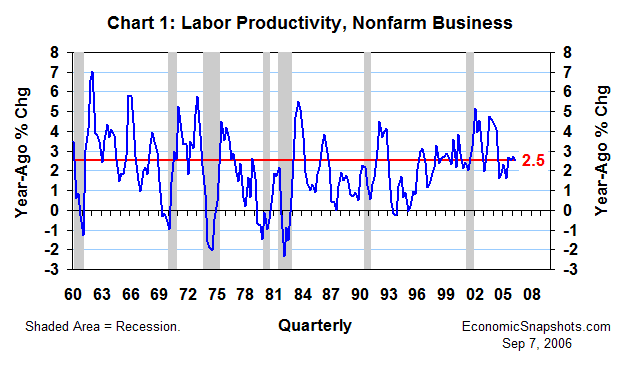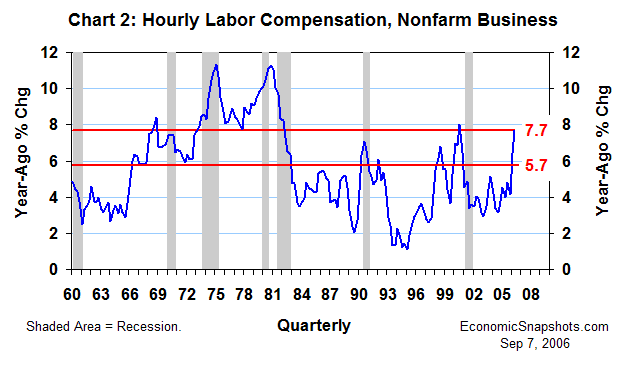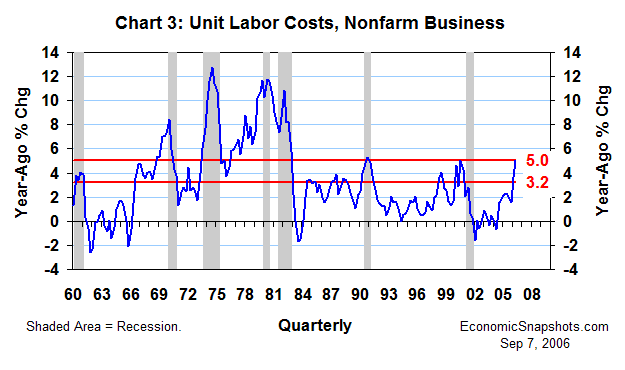
| Back to Index |
September 7, 2006 – In the regular monthly revision released on Wednesday, U.S. nonfarm labor productivity growth (growth in output per hour worked) was revised 0.5 percentage points higher to a 1.6% annual rate in Q2.
After revision, productivity rose by 2.5% in the four quarters through Q2 (Chart 1). Before revision, this four-quarter increase was 0.1 percentage points lower at 2.4%.

The new developments in nonfarm hourly labor compensation growth were far more impressive. Revisions raised Q2 compensation growth by 1.2 percentage points to a 6.6% annual rate. In addition, Q1 growth was revised 6.8 percentage points higher to a huge 13.7% annual rate.
Revised nonfarm hourly labor compensation rose by 7.7% in Q2, compared to the same quarter last year (Chart 2). That’s 2 percentage points more than the pre-revision increase of 5.7%.

Reflecting this extra compensation growth, nonfarm unit labor costs (productivity-adjusted labor compensation) rose at a revised 4.9% annual rate in Q2 (originally +4.2%), after a big 9% leap in Q1 (originally +2.5%).
These new data yield 5% growth in nonfarm unit labor costs for the four quarters through Q2 (Chart 3). Before revision, this increase was 1.8 percentage points lower at 3.2%.

During the bad old days of runaway U.S. inflation (from the second half of the 1960’s until about 1982) growth in unit labor costs often matched or exceeded these recent rates. Within the last two decades, however, the four-quarter trend in nonfarm businesses’ unit labor costs has spiked as high as 5% on only two prior occasions (once in Q4 1990 and once in Q3 2000).
As duly noted in their August minutes, “several” FOMC members were already worrying last month about the inflationary risk posed by unusually strong unit labor cost growth. This month’s upward revisions won’t make them feel any better.
However, the developments underlying these data for Q1 and Q2 are at least two to eight months old. For their decisions about the current course of U.S. monetary policy, FOMC members are likely to place more weight on how the Q3 data seem to be shaping up. There is still quite a bit of important data scheduled for release between now and the FOMC’s next policy meeting on September 20, including the August consumer price index and August retail sales (both coming next week).
Suzanne Rizzo